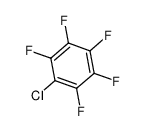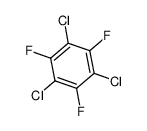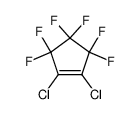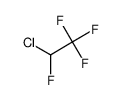1.Identification
1.1 GHS Product identifier
| Product name | 1,2-DICHLOROTETRAFLUOROETHANE |
|---|
1.2 Other means of identification
| Product number | - |
|---|---|
| Other names | Fron114 |
1.3 Recommended use of the chemical and restrictions on use
| Identified uses | For industry use only. Intermediates |
|---|---|
| Uses advised against | no data available |
1.4 Supplier's details
| Company | MOLBASE (Shanghai) Biotechnology Co., Ltd. |
|---|---|
| Address | Floor 4 & 5, Building 12, No. 1001 North Qinzhou Road, Xuhui District, Shanghai, China |
| Telephone | +86(21)64956998 |
| Fax | +86(21)54365166 |
1.5 Emergency phone number
| Emergency phone number | +86-400-6021-666 |
|---|---|
| Service hours | Monday to Friday, 9am-5pm (Standard time zone: UTC/GMT +8 hours). |
2.Hazard identification
2.1 Classification of the substance or mixture
Gases under pressure: Liquefied gas
2.2 GHS label elements, including precautionary statements
| Pictogram(s) |  |
|---|---|
| Signal word | Danger |
| Hazard statement(s) | H280 Contains gas under pressure; may explode if heated |
| Precautionary statement(s) | |
| Prevention | none |
| Response | none |
| Storage | P410+P403 Protect from sunlight. Store in a well-ventilated place. |
| Disposal | none |
2.3 Other hazards which do not result in classification
none
3.Composition/information on ingredients
3.1 Substances
| Chemical name | Common names and synonyms | CAS number | EC number | Concentration |
|---|---|---|---|---|
| 1,2-DICHLOROTETRAFLUOROETHANE | 1,2-DICHLOROTETRAFLUOROETHANE | 76-14-2 | none | 100% |
4.First-aid measures
4.1 Description of necessary first-aid measures
General advice
Consult a physician. Show this safety data sheet to the doctor in attendance.
If inhaled
Fresh air, rest. Artificial respiration may be needed. Refer for medical attention.
In case of skin contact
ON FROSTBITE: rinse with plenty of water, do NOT remove clothes. Refer for medical attention .
In case of eye contact
First rinse with plenty of water for several minutes (remove contact lenses if easily possible), then refer for medical attention.
If swallowed
Never give anything by mouth to an unconscious person. Rinse mouth with water. Consult a physician.
4.2 Most important symptoms/effects, acute and delayed
Prolonged exposure can cause narcotic effect or rapid suffocation. (USCG, 1999)
4.3 Indication of immediate medical attention and special treatment needed, if necessary
Victims of freon inhalation require management for hypoxic, CNS anesthetic, & cardiac symptoms. Patients must be removed from the exposure environment, & high flow supplemental oxygen should be utilized. The respiratory system should be evaluated for injury, aspiration, or pulmonary edema & treated appropriately. CNS findings should be treated supportively. A calm environment with no physical exertion is imperative to avoid increasing endogenous adrenegic levels. Exogenous adrenergic drugs must not be used to avoid inducing sensitized myocardial dysrhythmias. Atropine is ineffective in treating bradyarrhythmias. For ventricular dysrhythmias, diphenylhydantoin & countershock may be effective. Cryogenic dermal injuries should be treated by water bath rewarming at 40-42°C until vasodilatory flush has returned. Elevation of the limb & standard frostbite management with late surgical debridement should be utilized. Ocular exposure requires irrigation & slit lamp evaluation for injury. /Freons/
5.Fire-fighting measures
5.1 Extinguishing media
Suitable extinguishing media
Firefighters should wear self-contained, NIOSH-approved breathing apparatus for protection against suffocation and possible toxic decomposition products. Proper eye and skin protection should be provided. Use water spray to keep fire-exposed containers cool.
5.2 Specific hazards arising from the chemical
Excerpt from ERG Guide 126 [Gases - Compressed or Liquefied (Including Refrigerant Gases)]: Some may burn but none ignite readily. Containers may explode when heated. Ruptured cylinders may rocket. (ERG, 2016)
5.3 Special protective actions for fire-fighters
Wear self-contained breathing apparatus for firefighting if necessary.
6.Accidental release measures
6.1 Personal precautions, protective equipment and emergency procedures
Use personal protective equipment. Avoid dust formation. Avoid breathing vapours, mist or gas. Ensure adequate ventilation. Evacuate personnel to safe areas. Avoid breathing dust. For personal protection see section 8.
6.2 Environmental precautions
Ventilation. NEVER direct water jet on liquid. Do NOT let this chemical enter the environment. Personal protection: chemical protection suit including self-contained breathing apparatus.
6.3 Methods and materials for containment and cleaning up
If ... spilled or leaked, the following steps should be taken: 1. Ventilate area of spill or leak. 2. If the gas is leaking, stop the flow. 3. If the liquid is spilled or leaked, allow to vaporize.
7.Handling and storage
7.1 Precautions for safe handling
Avoid contact with skin and eyes. Avoid formation of dust and aerosols. Avoid exposure - obtain special instructions before use.Provide appropriate exhaust ventilation at places where dust is formed. For precautions see section 2.2.
7.2 Conditions for safe storage, including any incompatibilities
Fireproof if in building. Cool.Store in a cool, well-ventilated area of low fire risk and out of direct sunlight. Protect cylinder and its fittings from physical damage. Storage in subsurface locations should be avoided. Close valve tightly after use and when empty.
8.Exposure controls/personal protection
8.1 Control parameters
Occupational Exposure limit values
Recommended Exposure Limit: 10 Hour Time-Weighted Average: 1000 ppm (7000 mg/cu m).
Biological limit values
no data available
8.2 Appropriate engineering controls
Handle in accordance with good industrial hygiene and safety practice. Wash hands before breaks and at the end of workday.
8.3 Individual protection measures, such as personal protective equipment (PPE)
Eye/face protection
Safety glasses with side-shields conforming to EN166. Use equipment for eye protection tested and approved under appropriate government standards such as NIOSH (US) or EN 166(EU).
Skin protection
Wear impervious clothing. The type of protective equipment must be selected according to the concentration and amount of the dangerous substance at the specific workplace. Handle with gloves. Gloves must be inspected prior to use. Use proper glove removal technique(without touching glove's outer surface) to avoid skin contact with this product. Dispose of contaminated gloves after use in accordance with applicable laws and good laboratory practices. Wash and dry hands. The selected protective gloves have to satisfy the specifications of EU Directive 89/686/EEC and the standard EN 374 derived from it.
Respiratory protection
Wear dust mask when handling large quantities.
Thermal hazards
no data available
9.Physical and chemical properties
| Physical state | colourless gas |
|---|---|
| Colour | Colorless gas ... [Note: A liquid below 38 degrees F. Shipped as a liquefied compressed gas] |
| Odour | Faint, ether-like odor at high concentrations |
| Melting point/ freezing point | -94ºC(lit.) |
| Boiling point or initial boiling point and boiling range | 3.8ºC(lit.) |
| Flammability | Nonflammable GasNot combustible. Heating will cause rise in pressure with risk of bursting. Gives off irritating or toxic fumes (or gases) in a fire. |
| Lower and upper explosion limit / flammability limit | no data available |
| Flash point | no data available |
| Auto-ignition temperature | no data available |
| Decomposition temperature | no data available |
| pH | no data available |
| Kinematic viscosity | 0.012 cP at 60°C (gas) |
| Solubility | Souble in alcohol, ether |
| Partition coefficient n-octanol/water (log value) | log Kow = 2.82 |
| Vapour pressure | 1427 mm Hg ( 20 °C) |
| Density and/or relative density | 1.44 g/cm3 |
| Relative vapour density | 5.93 (vs air) |
| Particle characteristics | no data available |
10.Stability and reactivity
10.1 Reactivity
no data available
10.2 Chemical stability
Conditions contributing to instability: heat.
10.3 Possibility of hazardous reactions
The gas is heavier than air and may accumulate in lowered spaces causing a deficiency of oxygen.1,2-DICHLORO-1,1,2,2-TETRAFLUOROETHANE is chemically inert in many situations, but can react violently with strong reducing agents such as the very active metals and the active metals. Can react with strong oxidizing agents or weaker oxidizing agents under extremes of temperature. The reaction of aluminum with various halogenated hydrocarbons produces a self-sustaining reaction with sufficient heat to melt aluminum pieces, examples of other halogenated hydrocarbons are fluorotrichloromethane, dichlorodifluoromethane, chlorodifluoromethane, tetrafluoromethane. The vigor of the reaction appears to be dependent on the combined degree of fluorination and the vapor pressure [Chem. Eng. News 39(27):44(1961)].
10.4 Conditions to avoid
no data available
10.5 Incompatible materials
Incompatible with chemically-active metals such as sodium, potassium, calcium, powdered aluminum, zinc and magnesium; acids; acid fumes.
10.6 Hazardous decomposition products
Dangerous; When heated to decomp ... they evolve highly toxic /hydrogen/ chloride fumes. /Chlorides/
11.Toxicological information
Acute toxicity
- Oral: no data available
- Inhalation: LC50 Rabbit inhalation 75 pph/30 min
- Dermal: no data available
Skin corrosion/irritation
no data available
Serious eye damage/irritation
no data available
Respiratory or skin sensitization
no data available
Germ cell mutagenicity
no data available
Carcinogenicity
A4: Not classifiable as a human carcinogen. /Dichorotetrafluoroethane/
Reproductive toxicity
no data available
STOT-single exposure
no data available
STOT-repeated exposure
no data available
Aspiration hazard
no data available
12.Ecological information
12.1 Toxicity
- Toxicity to fish: no data available
- Toxicity to daphnia and other aquatic invertebrates: no data available
- Toxicity to algae: no data available
- Toxicity to microorganisms: no data available
12.2 Persistence and degradability
AEROBIC: 1,2-Dichloro-1,1,2,2-tetrafluoroethane was reported to be not readily biodegradable using an activated sludge inoculum in the Japanese MITI test(1).
12.3 Bioaccumulative potential
Measured BCF values ranging from 16 to 32 and 15 to 28 at 1,2-dichloro-1,1,2,2-tetrafluoroethane exposure levels of 400 and 40 mg/L, respectively, were reported using carp (Cyprinus carpio) which were exposed over an 6-week period(1). According to a classification scheme(2), this BCF suggests the potential for bioconcentration in aquatic organisms is low to moderate(SRC).
12.4 Mobility in soil
The Koc of 1,2-dichloro-1,1,2,2-tetrafluoroethane is estimated as 280(SRC), using a log Kow of 2.82(1) and a regression-derived equation(2). According to a classification scheme(3), this estimated Koc value suggests that 1,2-dichloro-1,1,2,2-tetrafluoroethane is expected to have moderate mobility in soil.
12.5 Other adverse effects
no data available
13.Disposal considerations
13.1 Disposal methods
Product
The material can be disposed of by removal to a licensed chemical destruction plant or by controlled incineration with flue gas scrubbing. Do not contaminate water, foodstuffs, feed or seed by storage or disposal. Do not discharge to sewer systems.
Contaminated packaging
Containers can be triply rinsed (or equivalent) and offered for recycling or reconditioning. Alternatively, the packaging can be punctured to make it unusable for other purposes and then be disposed of in a sanitary landfill. Controlled incineration with flue gas scrubbing is possible for combustible packaging materials.
14.Transport information
14.1 UN Number
| ADR/RID: UN1958 | IMDG: UN1958 | IATA: UN1958 |
14.2 UN Proper Shipping Name
| ADR/RID: 1,2-DICHLORO-1,1,2,2- TETRAFLUOROETHANE (REFRIGERANT GAS R 114) |
| IMDG: 1,2-DICHLORO-1,1,2,2- TETRAFLUOROETHANE (REFRIGERANT GAS R 114) |
| IATA: 1,2-DICHLORO-1,1,2,2- TETRAFLUOROETHANE (REFRIGERANT GAS R 114) |
14.3 Transport hazard class(es)
| ADR/RID: 2 | IMDG: 2 | IATA: 2 |
14.4 Packing group, if applicable
| ADR/RID: unknown | IMDG: unknown | IATA: unknown |
14.5 Environmental hazards
| ADR/RID: no | IMDG: no | IATA: no |
14.6 Special precautions for user
no data available
14.7 Transport in bulk according to Annex II of MARPOL 73/78 and the IBC Code
no data available
15.Regulatory information
15.1 Safety, health and environmental regulations specific for the product in question
| Chemical name | Common names and synonyms | CAS number | EC number |
|---|---|---|---|
| 1,2-DICHLOROTETRAFLUOROETHANE | 1,2-DICHLOROTETRAFLUOROETHANE | 76-14-2 | none |
| European Inventory of Existing Commercial Chemical Substances (EINECS) | Listed. | ||
| EC Inventory | Listed. | ||
| United States Toxic Substances Control Act (TSCA) Inventory | Listed. | ||
| China Catalog of Hazardous chemicals 2015 | Listed. | ||
| New Zealand Inventory of Chemicals (NZIoC) | Listed. | ||
| Philippines Inventory of Chemicals and Chemical Substances (PICCS) | Listed. | ||
| Vietnam National Chemical Inventory | Not Listed. | ||
| Chinese Chemical Inventory of Existing Chemical Substances (China IECSC) | Listed. | ||
16.Other information
Information on revision
| Creation Date | Aug 17, 2017 |
|---|---|
| Revision Date | Aug 17, 2017 |
Abbreviations and acronyms
- CAS: Chemical Abstracts Service
- ADR: European Agreement concerning the International Carriage of Dangerous Goods by Road
- RID: Regulation concerning the International Carriage of Dangerous Goods by Rail
- IMDG: International Maritime Dangerous Goods
- IATA: International Air Transportation Association
- TWA: Time Weighted Average
- STEL: Short term exposure limit
- LC50: Lethal Concentration 50%
- LD50: Lethal Dose 50%
- EC50: Effective Concentration 50%
References
- IPCS - The International Chemical Safety Cards (ICSC), website: http://www.ilo.org/dyn/icsc/showcard.home
- HSDB - Hazardous Substances Data Bank, website: https://toxnet.nlm.nih.gov/newtoxnet/hsdb.htm
- IARC - International Agency for Research on Cancer, website: http://www.iarc.fr/
- eChemPortal - The Global Portal to Information on Chemical Substances by OECD, website: http://www.echemportal.org/echemportal/index?pageID=0&request_locale=en
- CAMEO Chemicals, website: http://cameochemicals.noaa.gov/search/simple
- ChemIDplus, website: http://chem.sis.nlm.nih.gov/chemidplus/chemidlite.jsp
- ERG - Emergency Response Guidebook by U.S. Department of Transportation, website: http://www.phmsa.dot.gov/hazmat/library/erg
- Germany GESTIS-database on hazard substance, website: http://www.dguv.de/ifa/gestis/gestis-stoffdatenbank/index-2.jsp
- ECHA - European Chemicals Agency, website: https://echa.europa.eu/
























